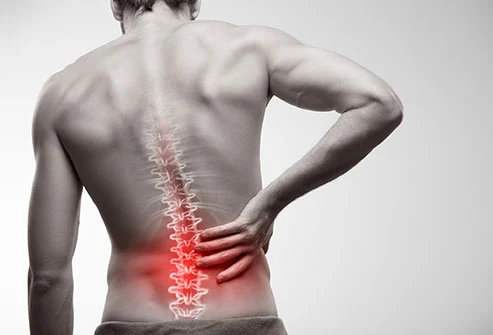“Patients have a poor understanding of back pain and physicians are terrible at explaining the trouble.”
Early in my career as a spine surgeon, I realized two things: Patients have a poor understanding of back pain and physicians are terrible at explaining the trouble. Both problems arise first from the fact that back pain is so common that everyone is an “expert” with a different idea of what is wrong and second because doctors treat back pain as a disease and not as the natural human condition it is. This focus emphasizes a search for pathology, subjecting patients to frightening and needless imaging and investigations. In fact, over 90% of back complaints arise for benign, usually minor mechanical problems typically lumped together as “non-specific” back pain, which is then treated haphazardly with unpredictable success.
Thinking about these issues lead me to several observations. Since most back pain is mechanical, that diagnosis should be considered first. Searching for “Red Flags” is necessary only in the absence of a clear mechanical picture. Analyzing the clinical presentations, I recognized that patients exhibited distinct patterns of back pain, patterns that could be established, without additional tests, on the history and confirmed with the physical examination. These distinct configurations of symptoms and signs were recognizable at first contact to the properly trained clinician. They obviously arose from the underlying mechanical abnormalities but their recognition did not require verifying a specific anatomical cause. Working with dozens of physiotherapists in what became the Canadian Back Institute, a chain of rehabilitation clinics across the country, we refined the parameters defining the various presentations and identified four major groups. We selected the essential questions in the patient’s history and the necessary procedures in the physical examination to confirm the pattern and established that these Patterns of Pain were sufficient to direct initial management.
Each pattern can be defined by three features of the typical pain:
- Its precise location – back or leg dominant
- Its consistency – constant or intermittent
- The effect of back flexion – aggravating, relieving, or producing no change
Additional questions address bowel and bladder function, the level of and the reason for the patient’s disability, alleviating movements and positions, any previous episodes and prior treatment. The accompanying examination includes general observation, verification of the pain response to flexion, and screening tests for nerve root irritation, conduction loss, spinal cord involvement and saddle sensation.
Although the assessment design is intended to determine the mechanical pattern, its scope includes the questions and maneuvers necessary to identify serious non-mechanical pathologies including tumors, myelopathy and cauda equina syndrome. One of the major advantages of clearly identifying the common presentations is that they sharply contrast with the appearance of the rare sinister causes. The Patterns of Pain also offer a prognosis. Each of the four categories has an anticipated duration and rate of recovery. Failure to follow the expected clinical course is a warning that the problem may be more than a simple mechanical malfunction and therefore requires reassessment and further investigation.
The ability to provide, at the first encounter, a definitive, useful diagnosis based on clinical presentation gives both the patient and the practitioner a sense of justifiable confidence. Treatment can commence without requiring, and in many cases avoiding, unnecessary imaging or laboratory results. Because the Pattern predicts the outcome, management is time limited and deviation from the predicted path demands reevaluation. Employing this classification, centered on observable patient characteristics, is both safe and effective. It gives patients a well-defined description of their back problem, an understanding that fits with their personal experience and improves compliance with care. It gives doctors the proper perspective, immediately directing physical treatment to resolve the pain rather than embarking on a fruitless search for a non-existent disease.


